Learn how to make Iriko Dashi (Niboshi Dashi), a Japanese anchovy stock made by boiling dried anchovies. This stock is fundamental to enhancing your miso soup for authentic flavor!
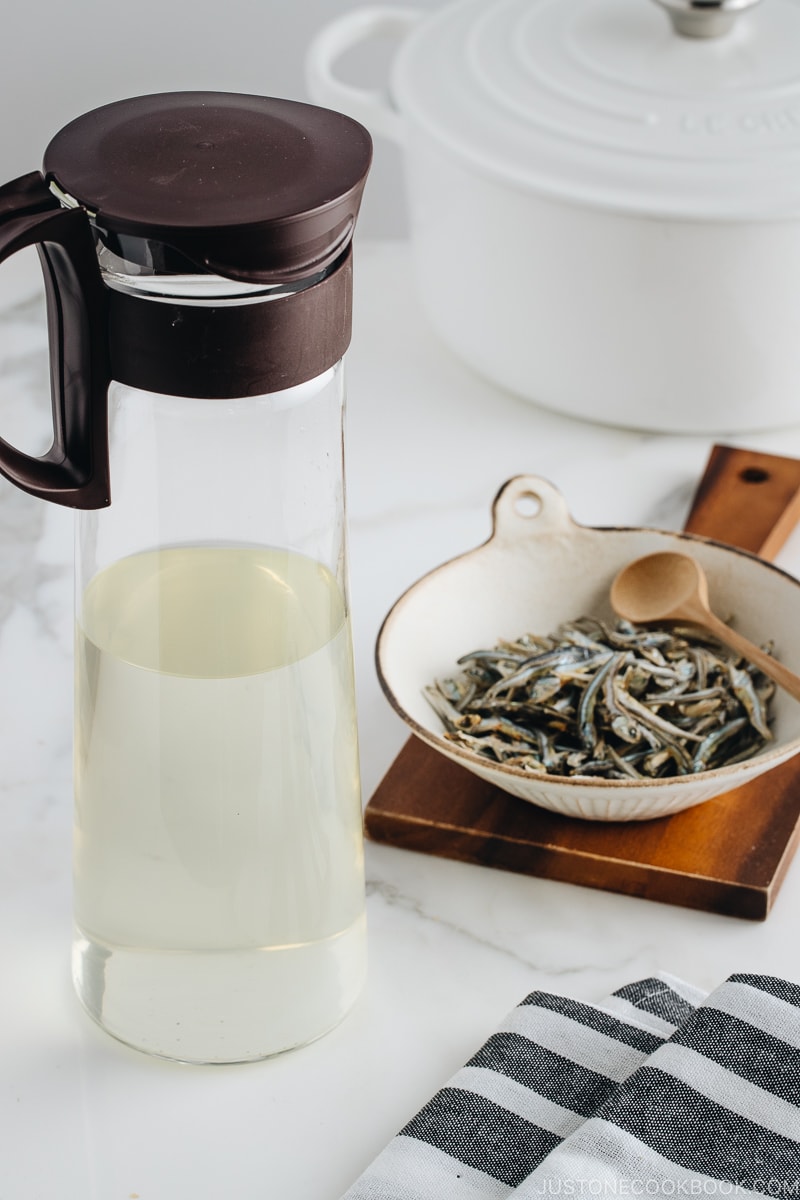
Making dashi (Japanese soup stock) is an all-important step in Japanese cooking to create authentic flavor. Today I want to share my recipe for how to make a Japanese anchovy stock called Iriko Dashi (いりこだし) or Niboshi Dashi (煮干しだし), commonly used in miso soup and many other hot pots, noodle soup, and simmered dishes.
What is Iriko Dashi?
Iriko dashi (いりこだし) or niboshi dashi (煮干しだし) is the Japanese soup stock made from iriko (いりこ) / niboshi (煮干し), dried baby sardines or anchovies.
Iriko (いりこ) / niboshi (煮干し) come in sizes between 1.5 to 3 inches (3.75–7.5 cm) long and are often sold in plastic bags at Japanese and Asian grocery stores. They have been boiled in salt water once and then dried.
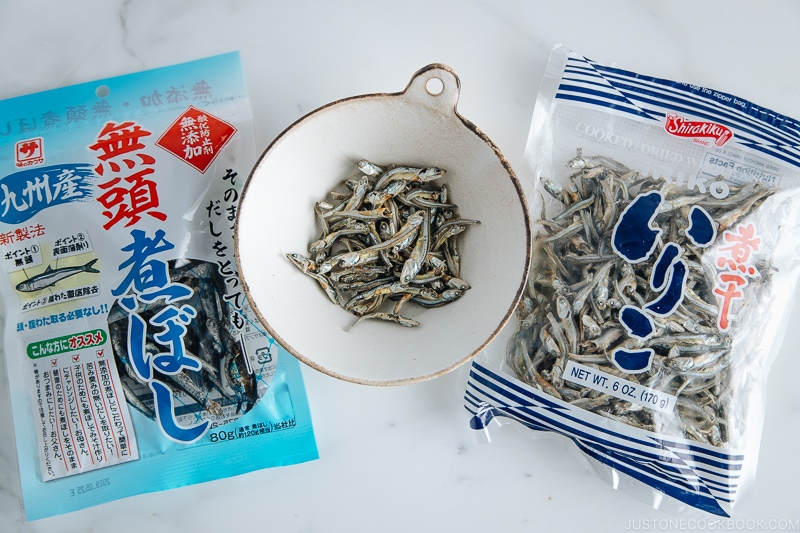
The smaller baby anchovies have a milder flavor, and the larger ones have more umami components. They are high in calcium and are a great source of omega-3 fatty acids, protein, and minerals.
In Japan, we enjoy these dried small fish as a snack or use them to make soup stock. They are also a common ingredient in Korean, Chinese, and Southeast Asian cuisines where they are used in many different ways.
Iriko vs Niboshi
Now, I have been using both iriko and niboshi throughout the post when referencing the dried baby anchovies. Not to confuse you, they are actually the same thing.
The Japanese have a knack for naming produce and vegetables, so you can find different names used in different regions of Japan.
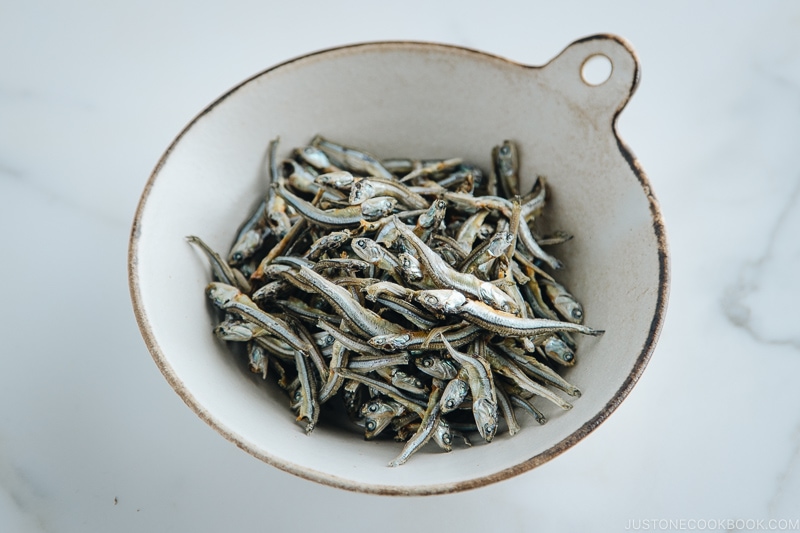
Ingredients You’ll Need
You just need two ingredients to make iriko dashi!
- iriko/niboshi (boiled and dried anchovies)
- water
How to Make Iriko Dashi
- Remove the head and guts from the dried fish (recommended). This helps reduce any bitter flavor.
- Soak the iriko in the measured water for 20–30 minutes or preferably overnight.
- Transfer the iriko and soaking liquid to a small saucepan and slowly bring the water to a boil.
- Skim the surface of the liquid, reduce to low heat, and cook for 8–10 minutes.
- Drain over a fine-mesh strainer into a bowl or measuring cup.
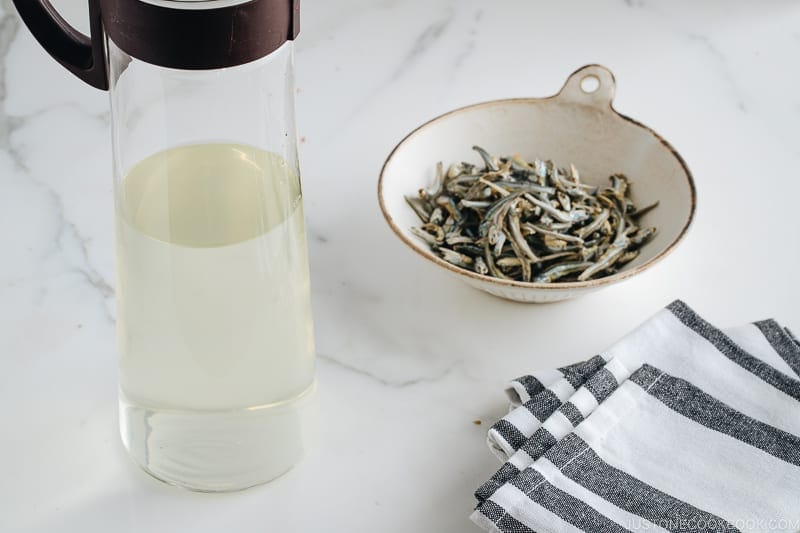
What Dishes to Make with Iriko Dashi
Iriko dashi is a very common stock choice to make miso soup because dried iriko are more affordable than katsuobushi (dried bonito fakes) or kombu (dried kelp). Since the Japanese drink miso soup almost every day, it makes sense to use iriko dashi. Its briny and pronounced flavor also complements the bold miso, resulting in a more complex-tasting soup.
You can use iriko dashi broth in the following Japanese food:
- miso soup
- simmered dishes with soybeans, vegetables, seaweed, mushrooms
- udon noodle soup
- strongly-flavored dishes
- good to mix with kombu dashi
Anchovy stock is also a basic stock for Korean cuisine, and the process of making the stock is very similar to the one for Japanese cuisine. For those who cannot find kombu or katsuobushi, you can try finding these dried baby anchovies/sardines from Korean grocery stores to make this iriko dashi.
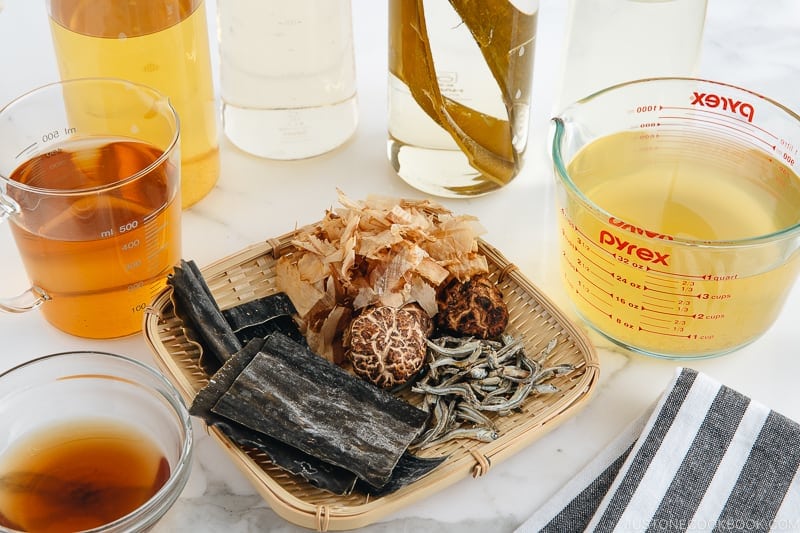
The Ultimate Dashi Guide
Dashi plays an important role as a flavor enhancer in Japanese cooking, so you don’t need to season the food with too much salt, fat, and sugar. Rich in minerals and other vitamins, dashi is considered a healthy ingredient in our daily diet.
There are six different types of dashi you can use in Japanese cooking, including vegetarian and vegan dashi (*).
- Awase Dashi – a stock made from a combination of dried kelp + bonito flakes
- Kombu Dashi * – a stock made from dried kelp
- Katsuo Dashi – a stock made from dried bonito flakes
- Iriko Dashi – a stock made from dried anchovies/sardines
- Shiitake Dashi * – a stock made from dried shiitake mushrooms
- Vegan Dashi * – a stock made from dried shiitake mushrooms and kombu
If you are new to different types of dashi, check out my Ultimate Dashi Guide.
Wish to learn more about Japanese cooking? Sign up for our free newsletter to receive cooking tips & recipe updates! And stay in touch with me on Facebook, Pinterest, YouTube, and Instagram.
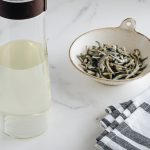
Iriko Dashi (Anchovy Stock)
Video
Ingredients
For 4 Cups Iriko Dashi
- ½ cup iriko/niboshi (boiled and dried anchovies) (you can find iriko or niboshi at Japanese/Korean/Asian grocery stores)
- 4 cups water
For 2 Cups Iriko Dashi
- ¼ cup iriko/niboshi (boiled and dried anchovies)
- 2 cups water
Instructions
- Before You Start…Please note that this dashi requires a minimum soaking time of 20 minutes.Gather all the ingredients. Measure ½ cup iriko/niboshi (boiled and dried anchovies) for the full portion of this recipe or ¼ cup iriko/niboshi (boiled and dried anchovies) for a half portion.
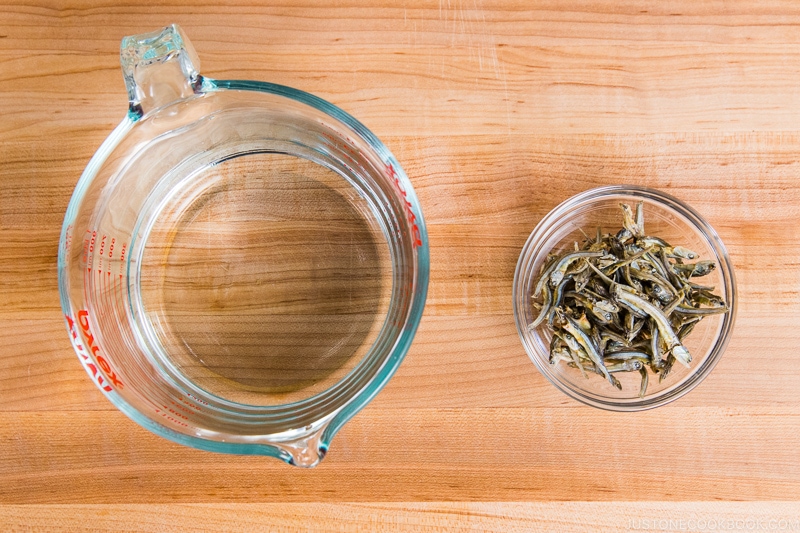
- I highly recommend removing the head and gut from the fish to reduce bitter flavor in iriko dashi. First, remove the head, and then around the belly area (bottom side), take out the gut inside (black color).
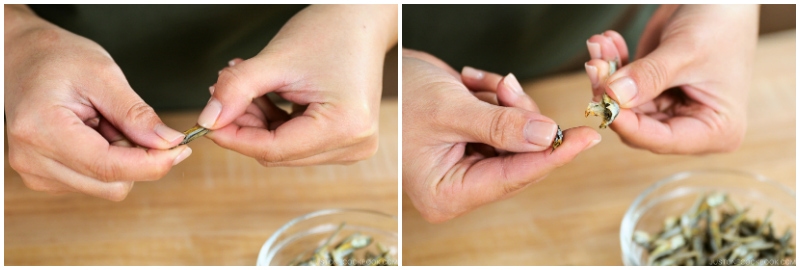
- Continue with the rest of the iriko/niboshi. Discard the head and guts.
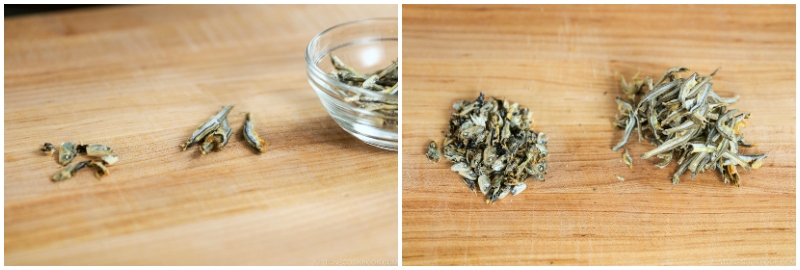
- Soak the iriko/niboshi in 4 cups water (or 2 cups water for a half portion) for 20–30 minutes, preferably overnight.
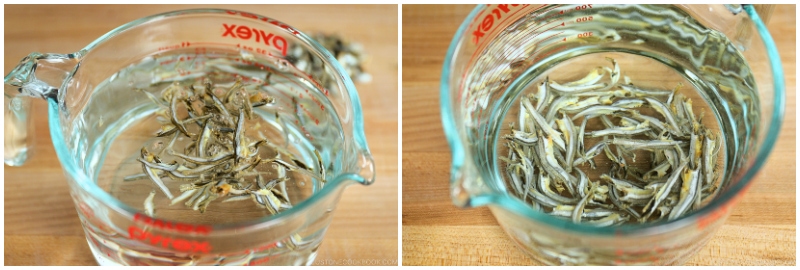
- Transfer the water and iriko/niboshi into a small saucepan and slowly bring the water to a boil.
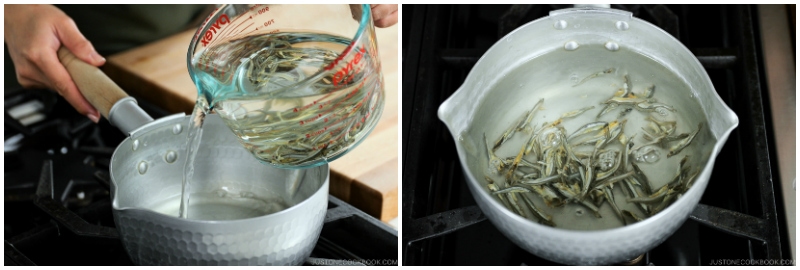
- When boiling, skim and reduce heat to low and cook for 8–10 minutes.
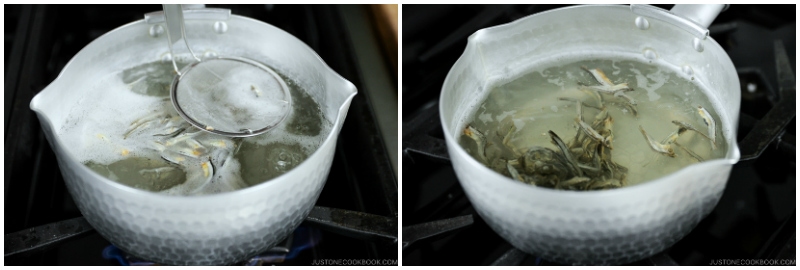
- Remove from the heat and drain into a fine-mesh sieve over a bowl or measuring cup. Any extra dashi needs to be refrigerated and used within 3–5 days or freeze for later use.
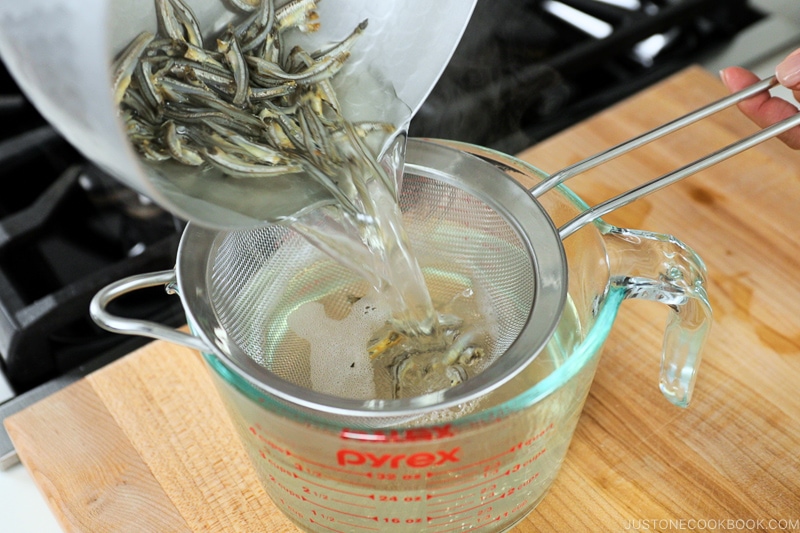
To Store
- If you don‘t make it right away, you can freeze the leftover iriko/niboshi and defrost to make it later on.
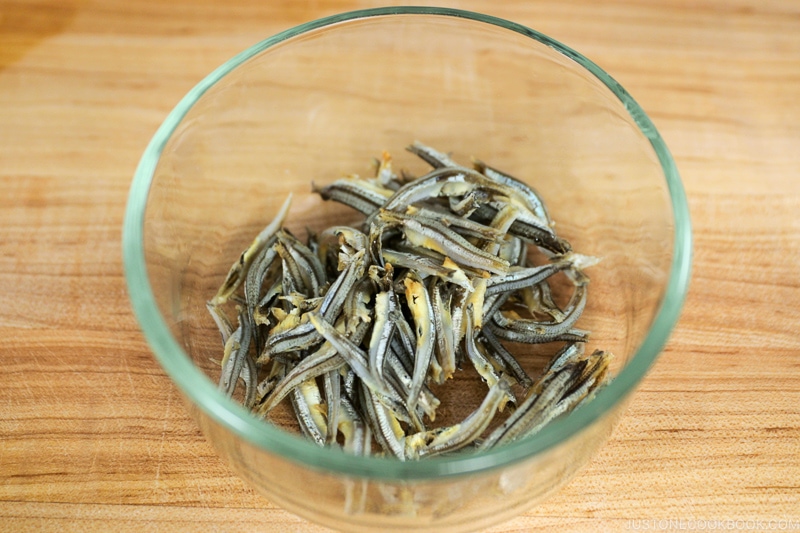
- You can season the leftover iriko with sweet soy sauce flavors just like how we make Tazukuri (Candied Anchovies).
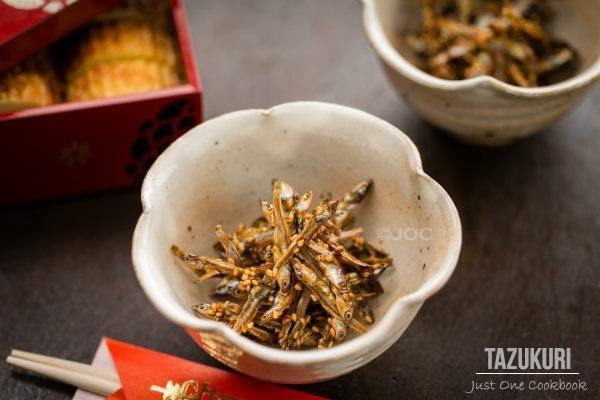
Nutrition
Editor’s Note: The post was originally published in March 2014. New images and content have been added to the post in April 2019.
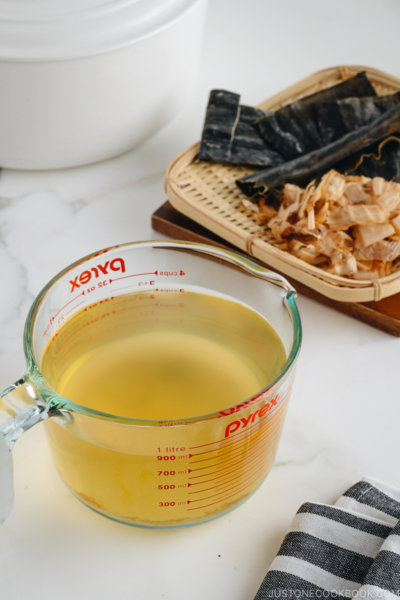
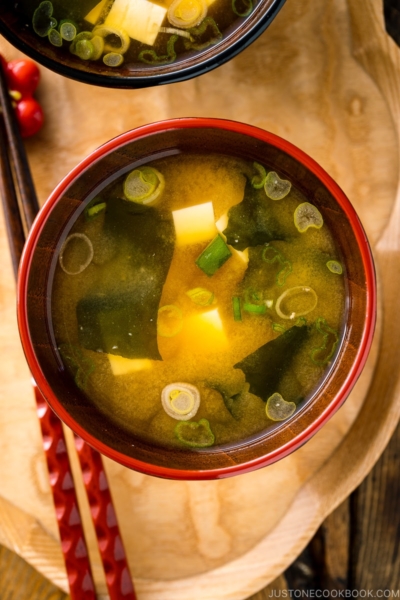
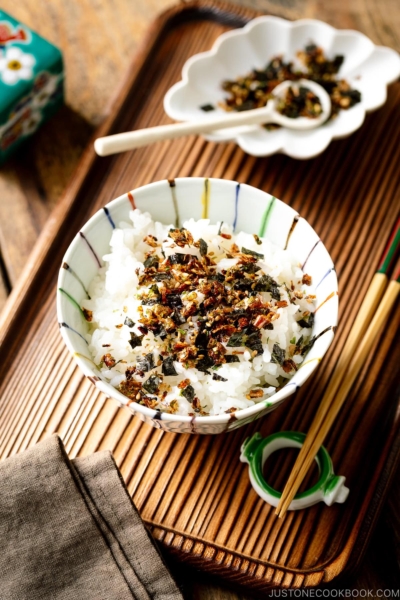





Can I use both niboshi and katsuoboshi to make dashi ?
Hello, Lynn. Thank you very much for reading Nami’s post.
Yes. You can use both of them to make Dashi. The amount you use in the dashi can also be adjusted to your preference. We hope you find your favorite Dashi blend!
This is great! I recently found niboshi powder at my Japanese grocer, and wondering if you have any recommendation for using that. I’ve always used whole fish, but this seems interesting.
Hello, Steve! Niboshi powder can be used to make Dashi or as a seasoning.
If the product is in a loose packet (rather than a tea bag), you can add it directly to the soup or dish.
You may also use it as furikake (mixed with rice), sprinkle it on top of dishes like okonomiyaki, or top it just like you use katsuobushi.
We hope this helps!
Hiya,
I’m a little confused about the cup measurements on the site. Where it says “1 cup” does that mean a 250ml cup? I’m in the UK and I know UK and US cup measurements are different as well as the fact that some Japanese recipes use a 180ml rice cooker cup.
In Ms.Chen’s recipes is it always a 250ml cup unless specified to be a 180ml rice cooker cup?
Thank you!
Hi. I’m 66 now but as an American child lived on Okinawa for 7 yrs. Our maid made Sukiyaki for us. I loved it, and it haunts me still today. I’m a great cook and love trying new things. I want to make it myself now. Would you have any idea what kind of sauce THEY used. I’d have no idea if it started with fish or just seed weed and mushrooms. It was back in the early 1960’s so the ingredient list may have been slimmer than today.
I loved that thinly, sliced beef, the dark brown broth over rice with the cellophane noodles.. So far I can’t find a Japanese restaurant that makes it here in Orlando FL.
Thank YOU so much!
Hi Marie! Thank you very much for reading Nami’s post.
Okinawa Sukiyaki has a similar flavor to Kansai or Kanto style. https://www.justonecookbook.com/sukiyaki/
But vegetables are probably cabbage or lettuce. And recipes that we fond are only using water instead of Dashi. Your maid might use Katsuo Dashi which is more common than Iriko Dashi in Okinawa cuisine, so try recreating the broth with Katsuo Dashi, soy sauce, mirin, and sugar, and see how it goes.
Here are a few recipes that we found. (Sorry, only in Japanese)
https://cookpad.com/recipe/4471795
http://www.mammemo.net/article/450384631.html
We hope this helps!